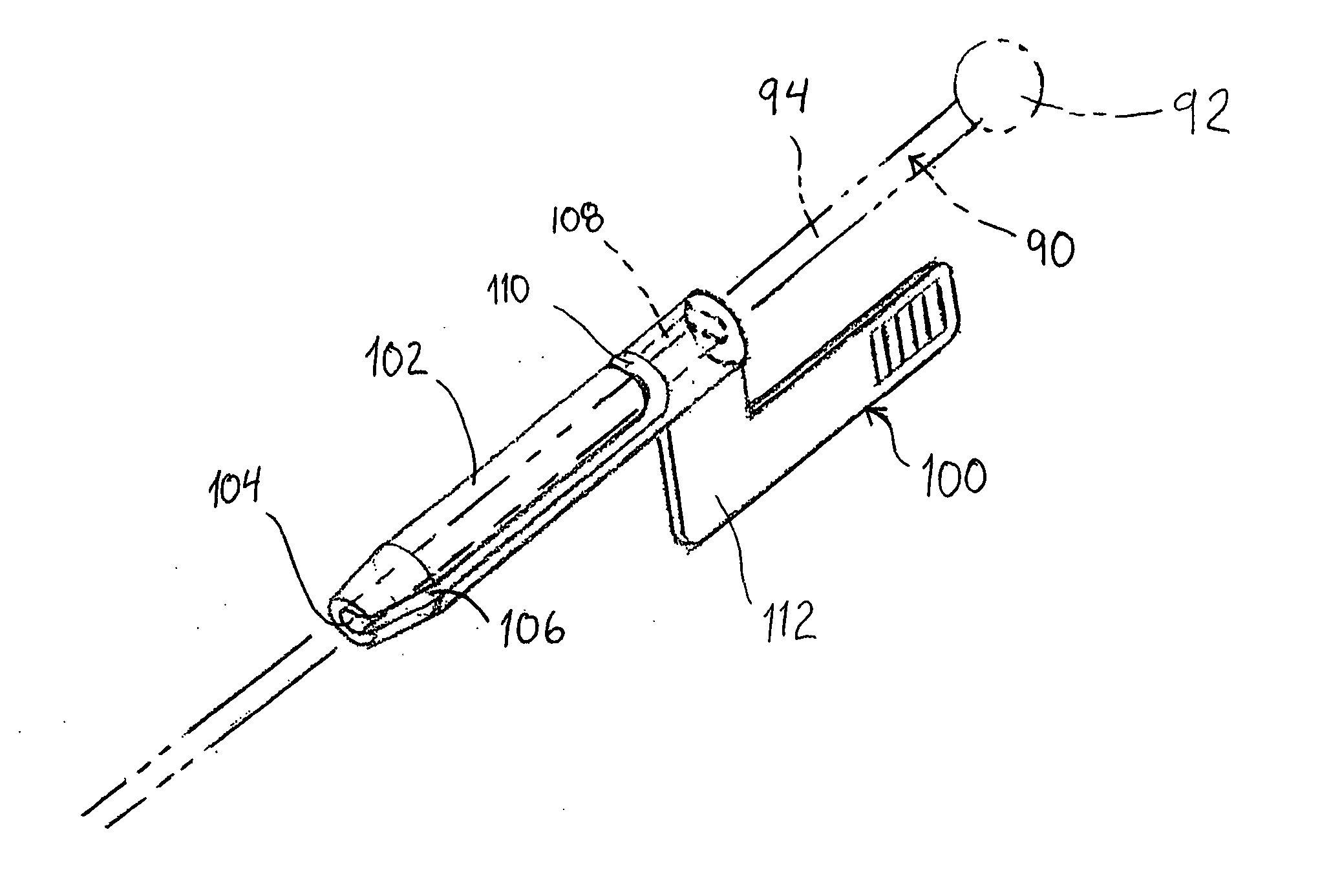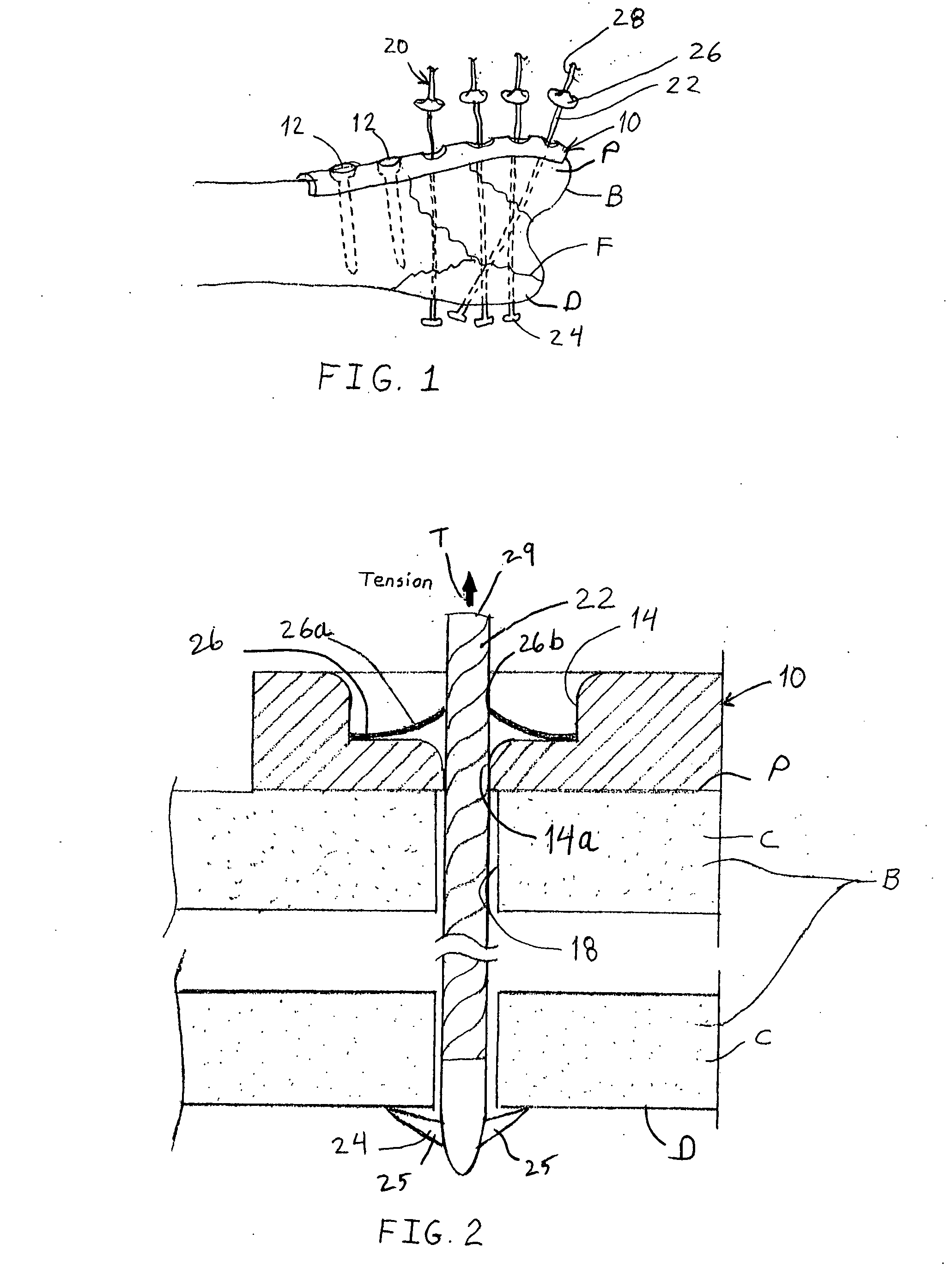Fastening system for internal fixation
a technology of internal fixation and fastening, which is applied in the field of system for internal fixation of bones, can solve the problems of fracture non-union, screw threads that cannot find adequate purchase in the bone to hold the bone, and each of these steps is complicated, and achieve the effect of optimizing fracture reduction
- Summary
- Abstract
- Description
- Claims
- Application Information
AI Technical Summary
Benefits of technology
Problems solved by technology
Method used
Image
Examples
Embodiment Construction
[0056] For the purposes of promoting an understanding of the principles of the invention, reference will now be made to the embodiments illustrated in the drawings and described in the following written specification. It is understood that no limitation to the scope of the invention is thereby intended. It is further understood that the present invention includes any alterations and modifications to the illustrated embodiments and includes further applications of the principles of the invention as would normally occur to one skilled in the art to which this invention pertains.
[0057] The present invention contemplates a system for reducing and fixing bone fractures, such as the fractures F in bone B shown in FIG. 1. The present system is particularly suited for fractures with multiple bone fragments that require precise reduction and secure fixation to maintain the reduction as the bone mends. In accordance with one embodiment, a bone plate 10 is positioned on the bone in a conventi...
PUM
 Login to view more
Login to view more Abstract
Description
Claims
Application Information
 Login to view more
Login to view more - R&D Engineer
- R&D Manager
- IP Professional
- Industry Leading Data Capabilities
- Powerful AI technology
- Patent DNA Extraction
Browse by: Latest US Patents, China's latest patents, Technical Efficacy Thesaurus, Application Domain, Technology Topic.
© 2024 PatSnap. All rights reserved.Legal|Privacy policy|Modern Slavery Act Transparency Statement|Sitemap



